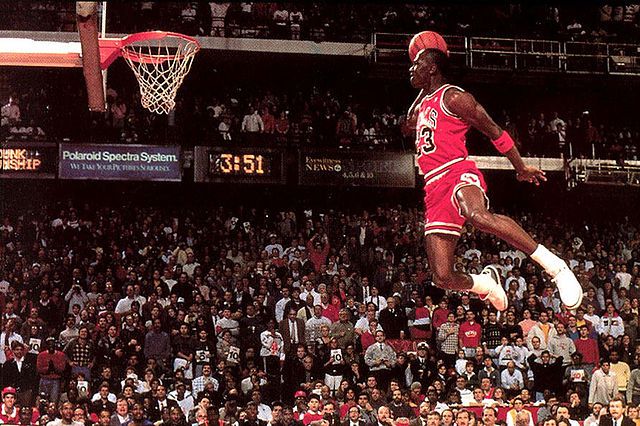When it comes to sports, it pays to be at the top of your game. Today, professional athletes stand alongside hedge fund managers, private equity managers, and business tycoons as some of the wealthiest people on the planet.
Highest Paid Athletes 2014, according to Forbes
1. Floyd Mayweather (boxer): $105 million total earnings
2. Cristiano Ronaldo (soccer): $80 million total earnings
3. LeBron James (basketball): $72.3 million total earnings
4. Lionel Messi (soccer): $64.7 million total earnings
5. Kobe Bryant (basketball): $61.5 million total earnings
However, the salaries of professional athletes didn’t always looks like this. In the last 50 years or so, a number of industry developments have impacted player earnings.
1920’s: Shoestring budgets and off-season jobs
Back in the 1920’s, the term “professional” sportsmen had a very different meaning. The earliest teams in professional football, for example, were run on shoestring budgets, with players being paid as little as $100 to $300 a game, and often traded for similar sums.
Iconic baseball superstar, Babe Ruth was paid just $80,000 per year – barely over $1 million dollars in today’s terms. Most other players made just a fraction of that, averaging $5,000, and supplementing their income with off-season jobs, like selling cars or insurance.
Professional golfers were among the best paid athletes during this era, with earnings coming from tournaments and contracts with upscale country clubs. Gene Sarazen and Walter Hagen each received between $25,000 and $30,000 a year. However, this didn’t change much over the next few decades. In 1955, golfing legend Arnold Palmer had his first professional win at the Canadian Open at Weston Golf and Country Club, pocketing just $2,400. In contrast, Australian golfer Adam Scott won $1.44 million at the Masters championship in 2013.
So how did professional athletes go from this to multi-million dollar superstars?
1960’s: Broadcasting rights & collective bargaining
The ‘60s was a time of great political and technological change. The introduction of television in the 1950’s, along with lucrative broadcasting deals, had begun to make many professional athletes significantly wealthier. Audience inflation suddenly went from thousands inside a stadium to millions via the television- and it didn’t take long for players to capitalize on this change.
Baseball clubs, for example, had historically used baseball collusion to keep player salaries at bay. Also referred to as a “gentleman’s agreement,” club owners worked together to avoid competitive bidding for players as a means of forcing down player salaries. However, that all changed in 1966 when Sandy Koufax and Don Drysdale, star pitchers who helped the LA Dodgers win the 1965 World Series, held joint negotiations and agreed on one-year contracts of $125,000 and $110,000 respectively. At the time it was the largest two contracts in baseball history.
Through supreme court rulings, federal legislation and unionization, other players were soon also able to create leverage in bargaining for higher salaries. In 1966, the MLB Players’ Association hired Marvin Miller from the United Steel Workers of America. Miller negotiated the first collective bargaining agreement with team owners in 1968, which raised the minimum salary from $6,000 to $10,000 per year. The 1970 CBA included arbitration to resolve disputes, and by 1975 the modern free agent system came to be. Through a combination of salary arbitration and free agency, salaries have continued to skyrocket.
1970’s: The million dollar contract
The 1970’s saw the first million-dollar sporting contract signed. In 1972, NHL player Bobby Hull made a deal with the Winnipeg Jets, signing a 10-year deal worth $1 million. At the time the sum was considered absurd. However, it was soon superseded by baseball player Dave Parker, who in 1978 signed a 5-year contract with the Pittsburgh Pirates for $5 million, making him the first professional athlete to earn $1 million per year.
1990’s: Multi-Million Dollar Deals

Superstar players of the ’80s and ’90s saw their salaries jump to levels never before thought possible. And yet, when you look back now, these deals still seem somewhat stunted.
It’s hard to believe that Michael Jordan, the greatest basketball player of all time, earned just $2-3 million a season for most of his career. This only changed as he neared the end of his career, signing a $30 million contract with the Bulls for the ’96-’97 season. No NBA player since has ever come close to topping Jordan’s pay, not even LeBron, whose current salary is $19.3 million.
The Millenium: The rise of the endorsement
As we entered a new Millenium, player salaries exploded to unprecedented levels. In 1970, the average salary in MLB (U.S. and Canada) was $20,000 ($121,457 inflation-adjusted). By 2005, it had increased to $2.6 million ($3.18m inflation-adjusted). And in 2012, the average MLB salary was $3.4 million.
Of course, pro baseballer Alex Rodriguez earns well above this average. In 2000 he signed a 10-year contract worth $252 million with the Texas Rangers – the biggest contract is sporting history at the time. In 2008, however, he opted out of this contract and signed a new 10-year deal with the Yankees for $275 million, standing to make at least half a billion dollars in salary alone before he retires. We’re seeing similar figures emerging across other sporting codes as well, from soccer, to football, to golf; multi-million dollar pay cheques are now the norm.
The modern day athlete makes his fortune through a mix of salary and endorsement deals. In 2009, Tiger Woods became the first athlete to earn $1 billion dollars in prize money and endorsements. And in 2013, despite an off season, he was still the highest paid active athlete in the world, earning $78.1 million because of his endorsement deals.
Soccer superstar, Cristiano Ronaldo, was not far behind, earning $73 million in salary, bonuses and endorsements in 2013 – the most any soccer player has ever made, including David Beckham.
Where to from here?
The sporting industry is like any other; a business run on profit and loss. And like most businesses, athletes will chase the most lucrative deal for them. It’s therefore only logical that salaries and endorsement deals will continue to rise, and new records will be set. Who knows, maybe one day people will look back at Alex Rodriguez’s $275 million deal as we do now on Babe Ruth’s $80,000 salary.

